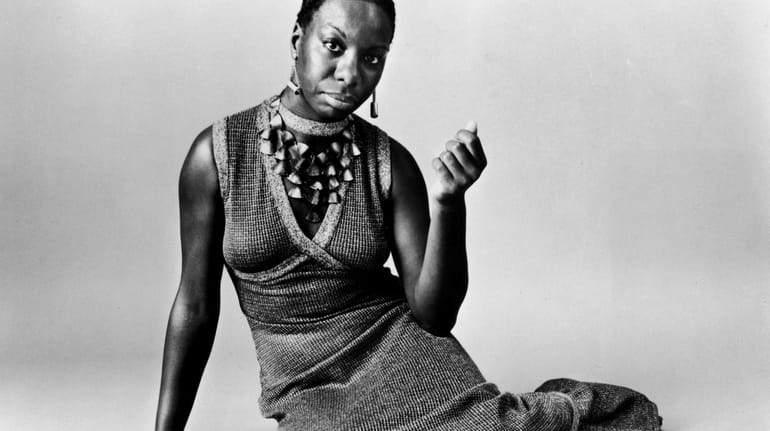'How It Feels to Be Free' review: Fascinating, informative look at six Black female entertainers

This studio portrait shows American pianist and jazz singer Nina Simone reclining on the floor circa 1968. Credit: Getty Images
DOCUMENTARY "American Masters: How It Feels to Be Free"
WHEN|WHERE Monday at 9 p.m. on WNET/13
WHAT IT'S ABOUT Alicia Keys produced this off-brand "American Masters" about six African-American female entertainers — Lena Horne, Abbey Lincoln, Nina Simone, Diahann Carroll, Cicely Tyson and Pam Grier — who confronted racial stereotypes in their own industries, and changed the world in the process. It's based on the 2013 book of the same name by Rutgers history professor Ruth Feldstein, who is interviewed. Also on camera: Keys, Halle Berry, LaTanya Richardson and others.
MY SAY "How It Feels to Be Free" tries to do something really hard, and that it doesn't entirely succeed shouldn't come as too much of a shock. Six major stars, six complicated lives, each navigating race, culture, politics, gender and history — all this in just under two running hours? Lena Waithe also observes that "these women knew they were doing it for those who come behind them." Doubtless true but so did Dorothy Dandridge, Eartha Kitt, Jessye Norman and Ruby Dee. They're scarcely mentioned (if at all) over these two hours.
Then there's this nitpick: Horne has already had her "Masters" portrait, and one or two others here easily deserve theirs too, yet crowding Tyson onto this stage just seems wrong. If there's any living actor more deserving of their own "Masters" portrait, please do let me know. Tyson is 96. Time is running out. (Well?)
OK, nitpicks duly noted and soap box discarded, "How It Feels to Be Free" is otherwise excellent. But mostly, it's just interesting — deeply so, and hardly a minute drags. You tend to think you know a little bit about a certain subject, but I never knew Carroll had championed her groundbreaking Oscar-nominated movie "Claudine" to countermand criticism of her groundbreaking 1968 NBC series "Julia." Simone appeared on "The Steve Allen Show'' in 1964, but mindful of broadcast standards, declined to say the full-name of her protest anthem "Mississippi Goddam," then Allen said it for her.
Grier doesn't appear until the 1:26 mark — entirely overlooked to that point, perhaps because Blaxploitation doesn't quite fit "Free's" narrative theme. But it makes up for the omission in a hurry. The old clips haven't lost their power to shock, or repulse, while Grier at 71, certainly hasn't lost the gift to command the screen either. Hair platinum, skin flawless, attitude intact, she first appears saying "I'm OG Pam Grier."
Relying on an interview with Horne's daughter Gail Lumet Buckley and footage from decades-old interviews of the star (Horne died in 2010), "Free" covers the injustices — some well-known, some less so. For example, Max Factor created a special makeup for Horne — "Light Egyptian" — which Ava Gardner wore in the movie version of "Show Boat." Horne had badly wanted the lead role of Julie LaVerne but Buckley explains that "MGM felt it was too big a risk to cast a light-skinned Black woman as a light-skinned Black woman."
What's best — also most frustrating — about "Free" is the portrait of Abbey Lincoln. She died in Manhattan in 2010 after a long illness, and other than the occasional tribute — like one at the Apollo in 2017 — has been largely forgotten since. "Free" corrects the oversight except that just when she comes into focus, it's off to someone else. This truncated portrait may not make a case for her own "Masters." It does, however, make one for a deeper appreciation.
BOTTOM LINE A fascinating, informative jumble.
